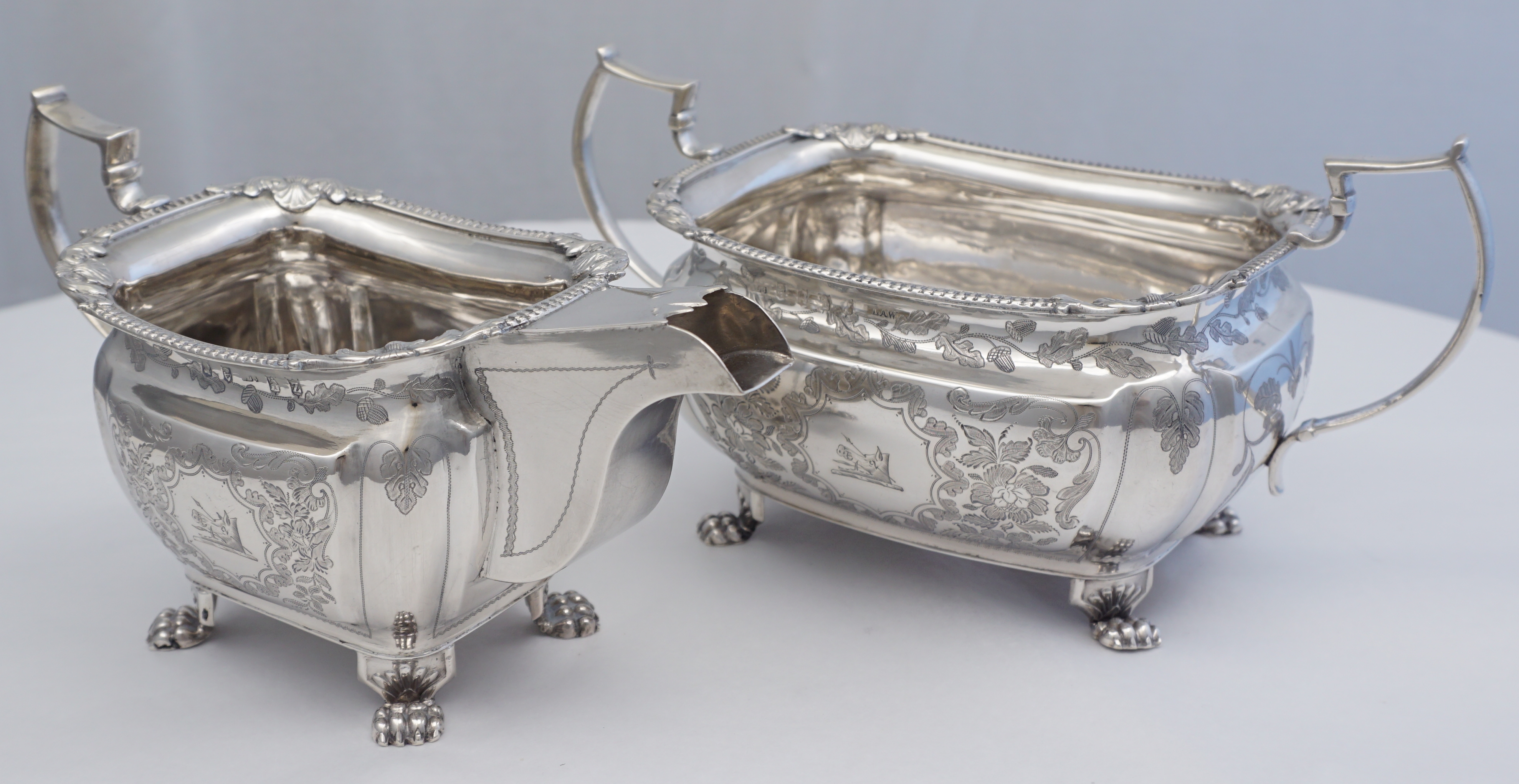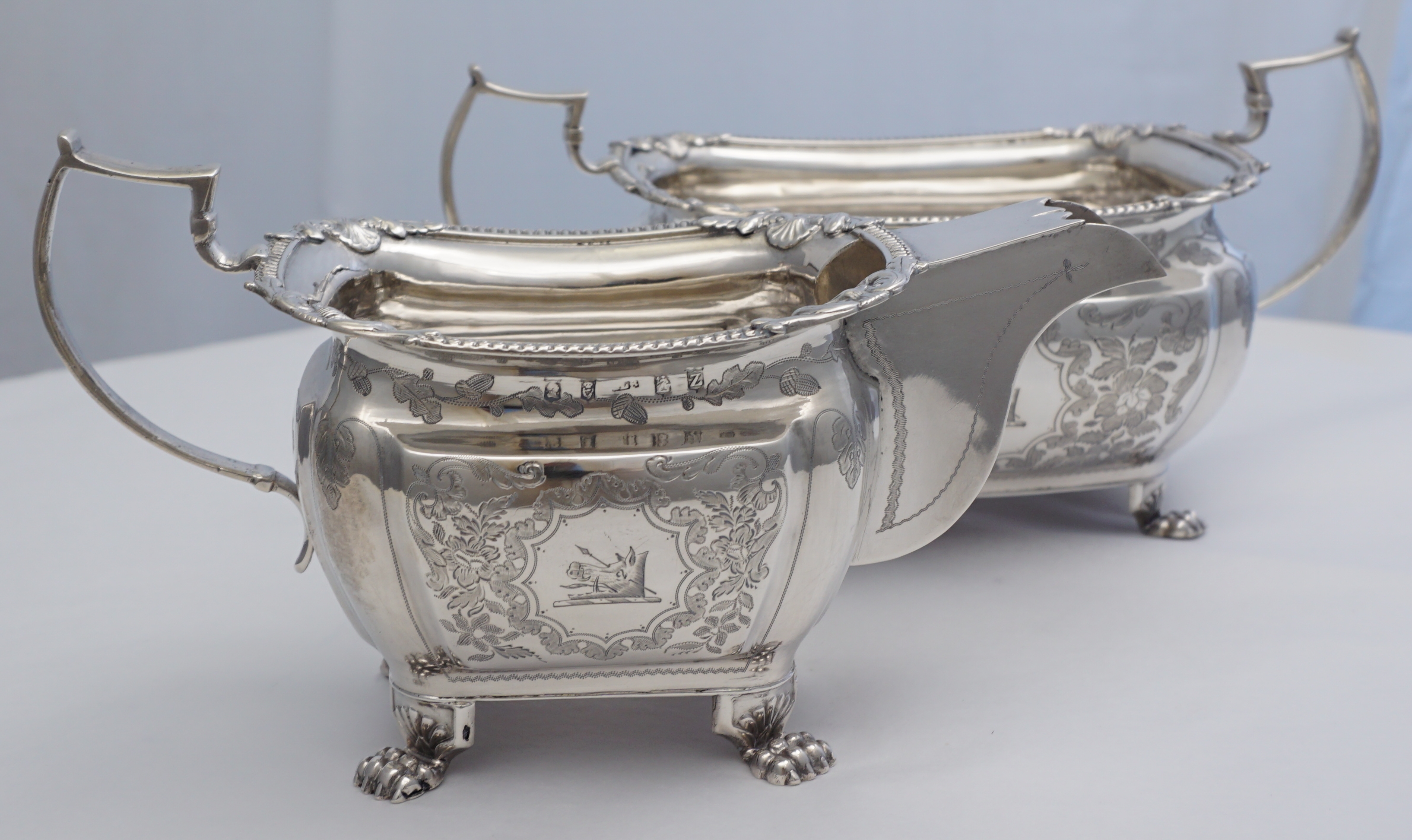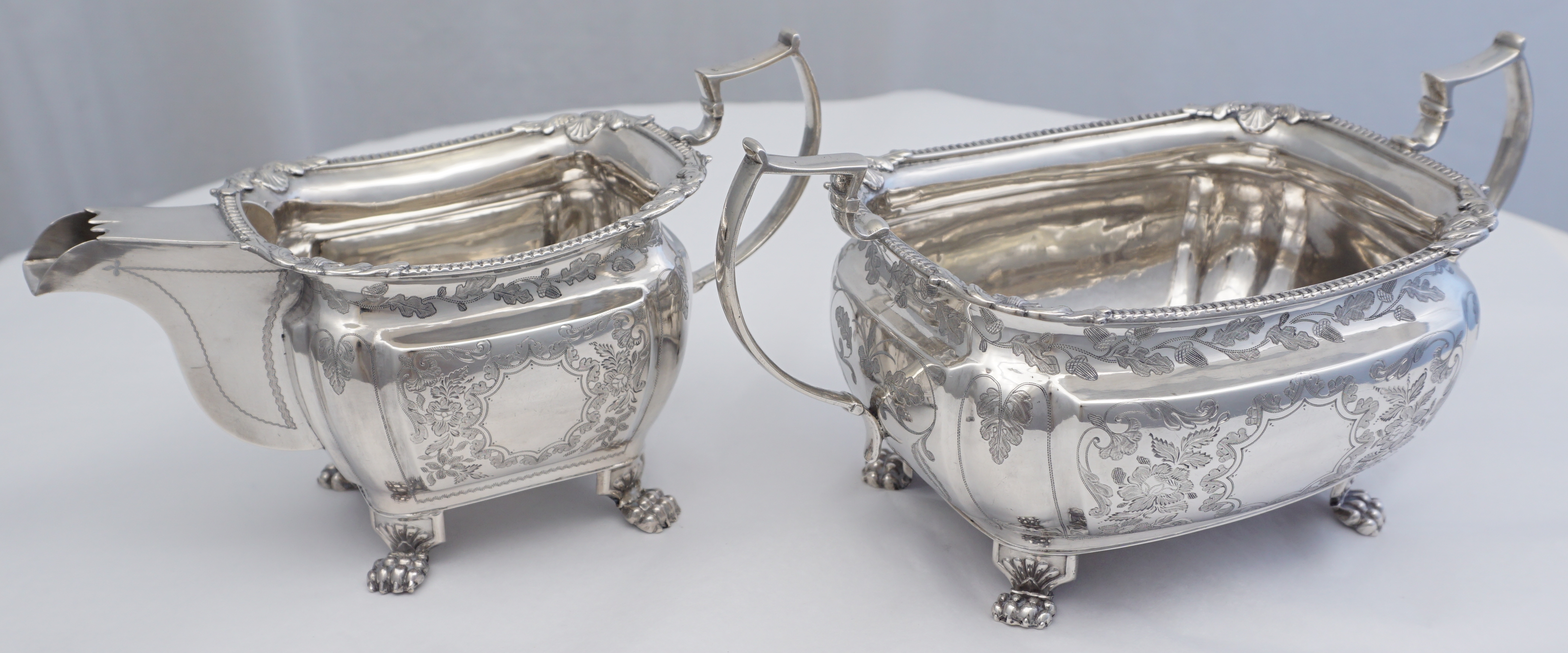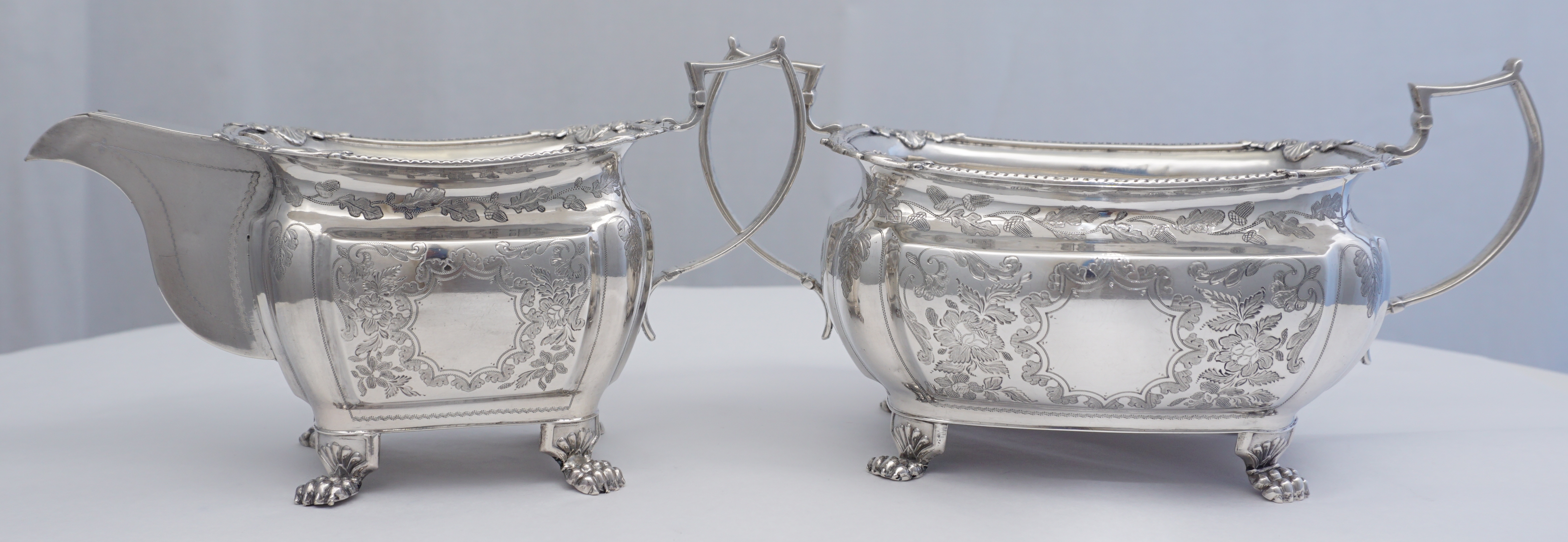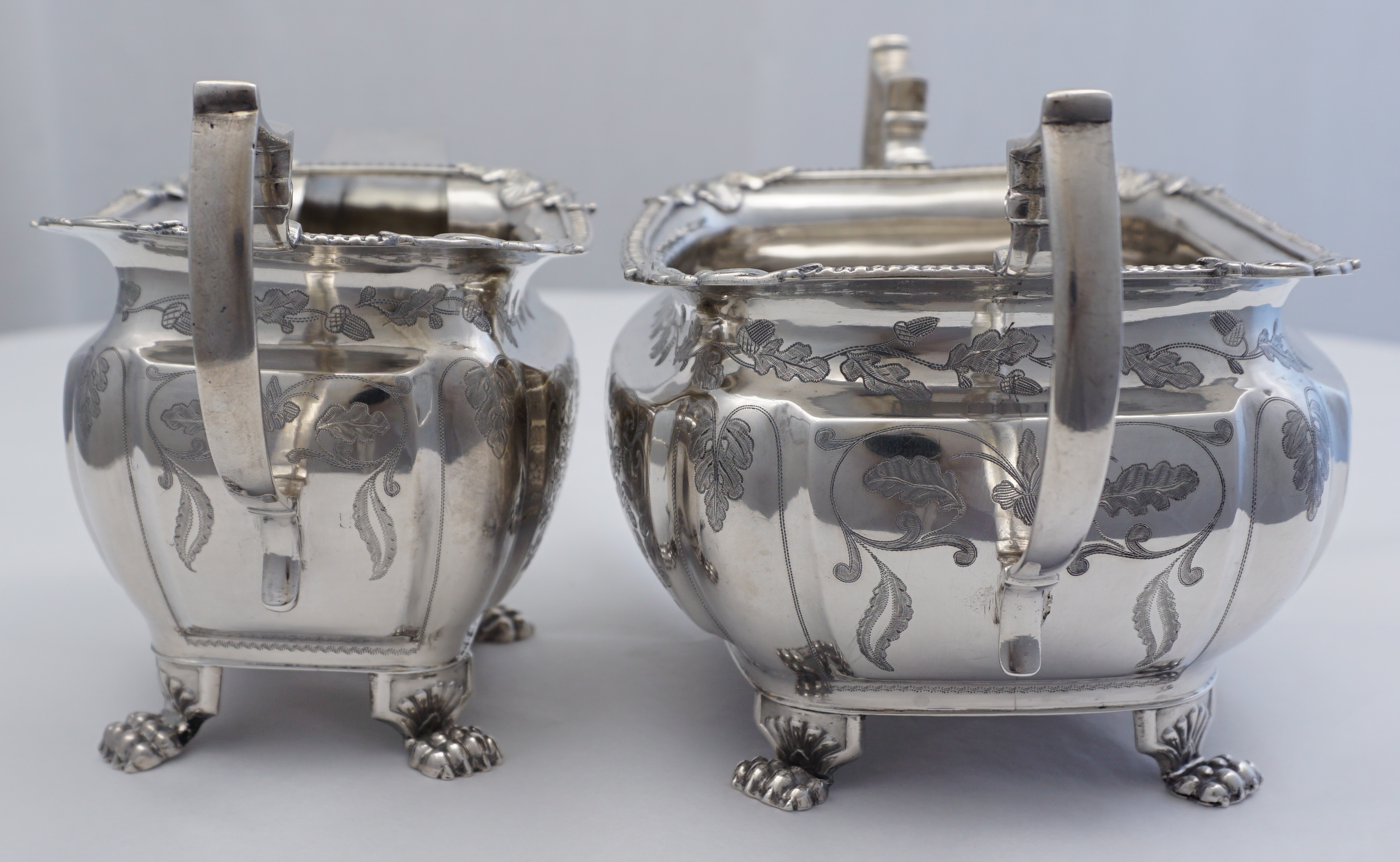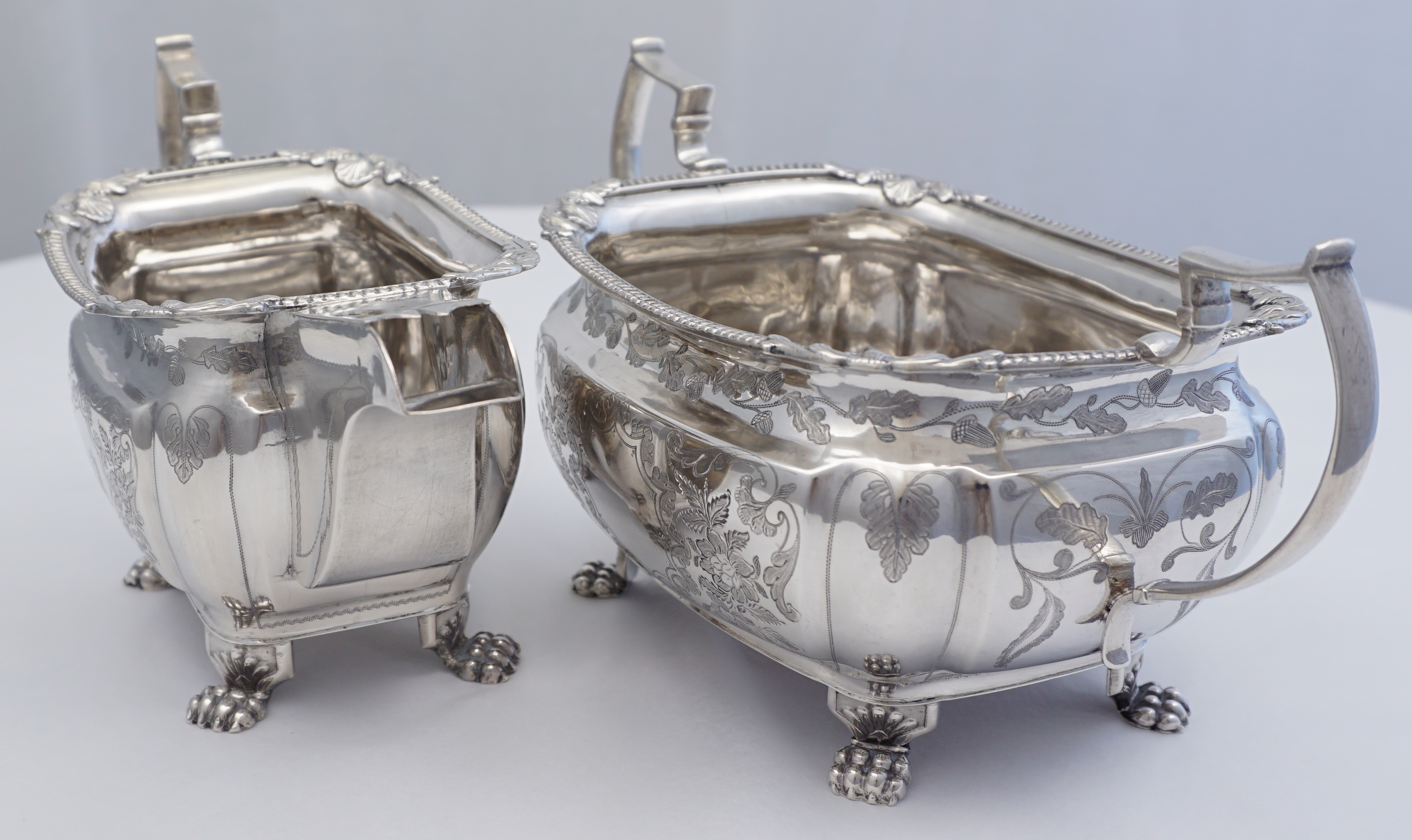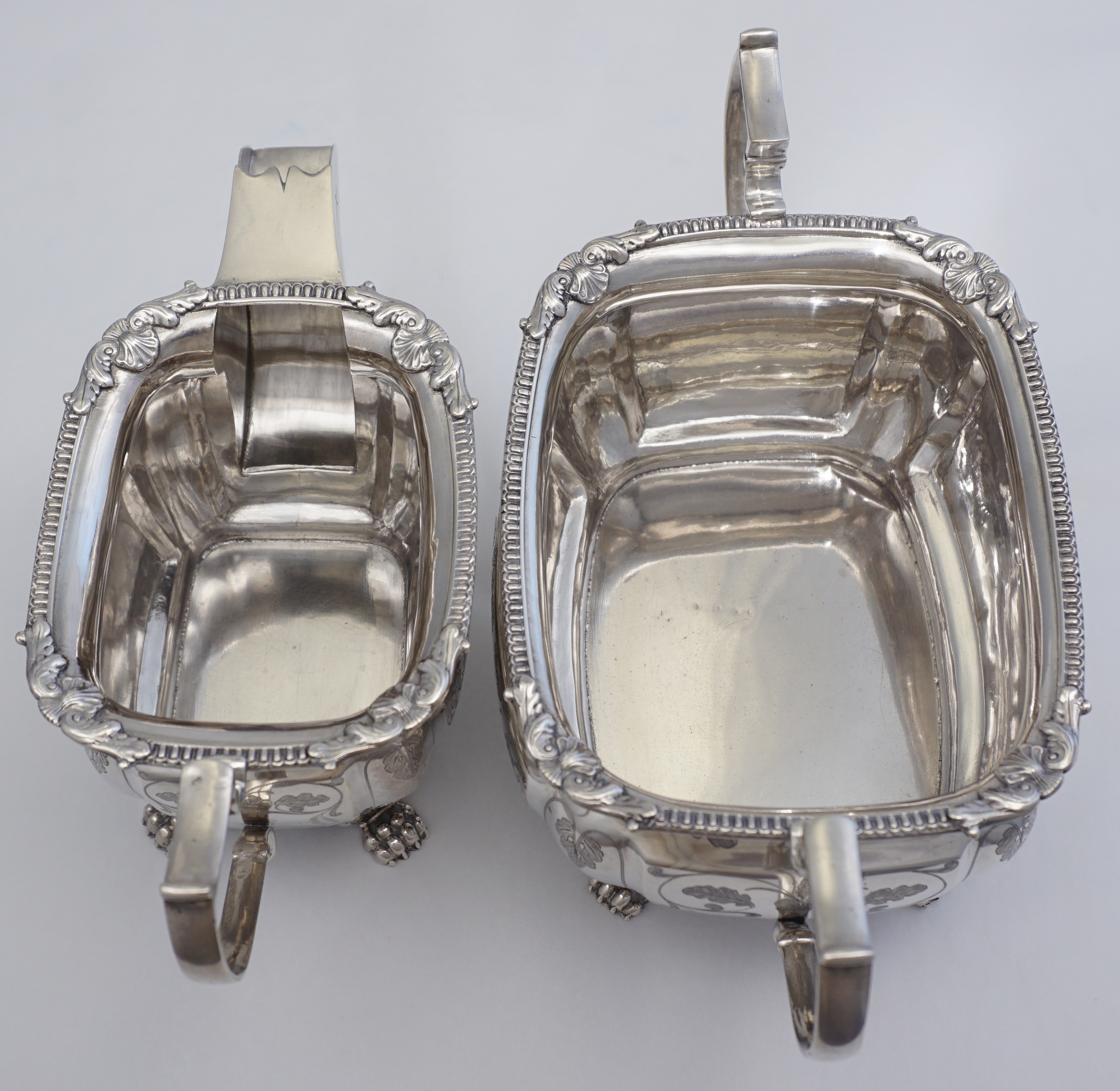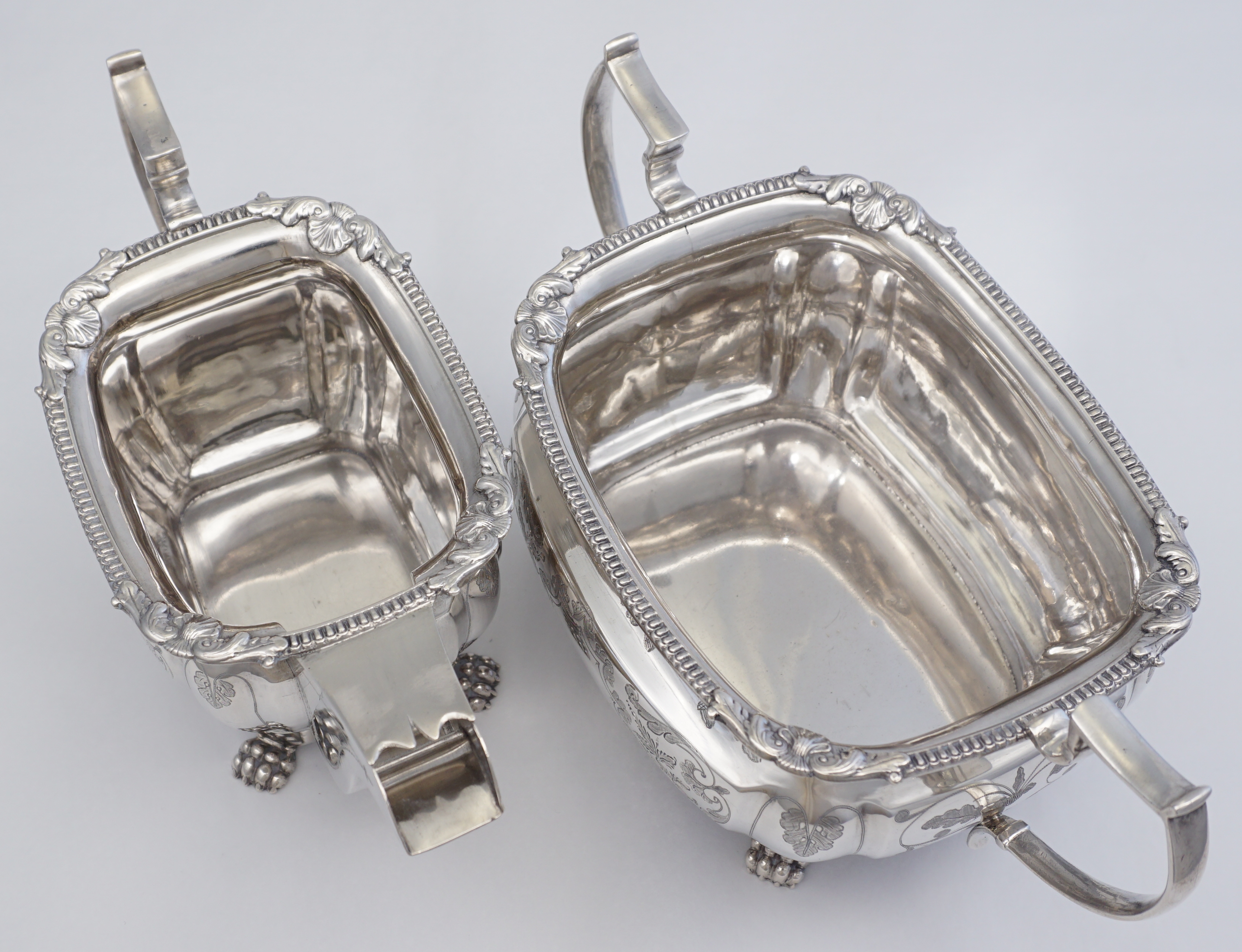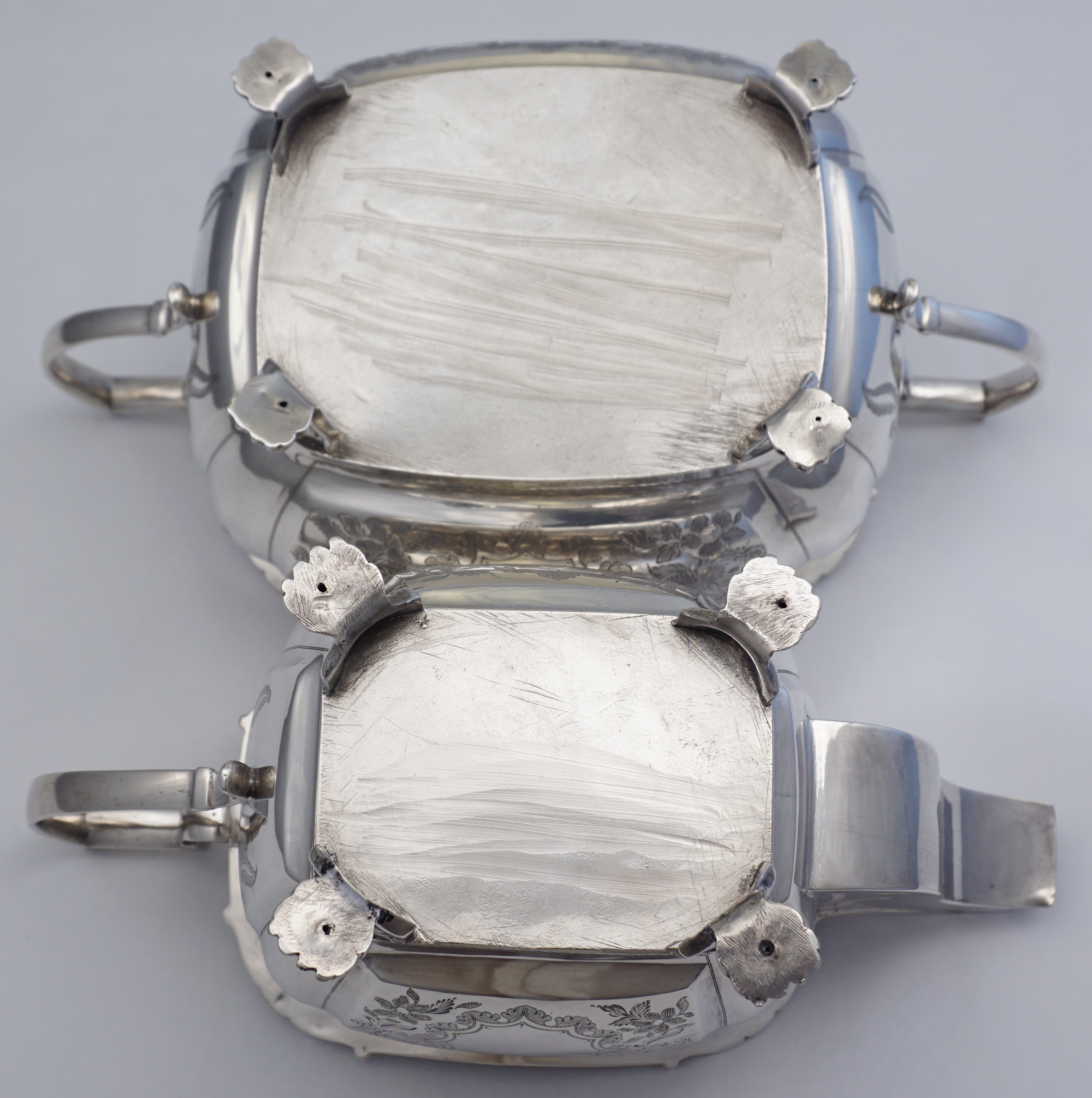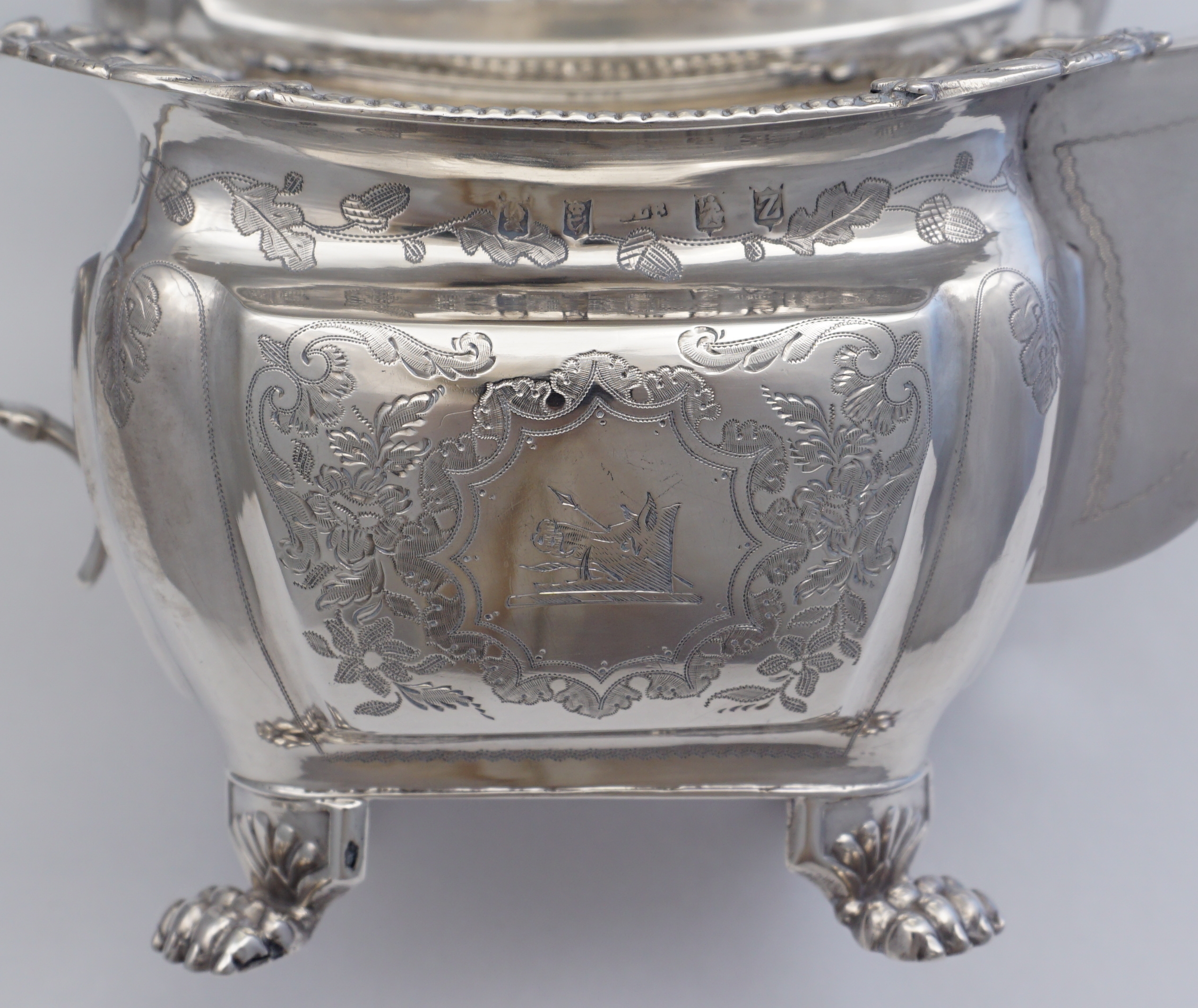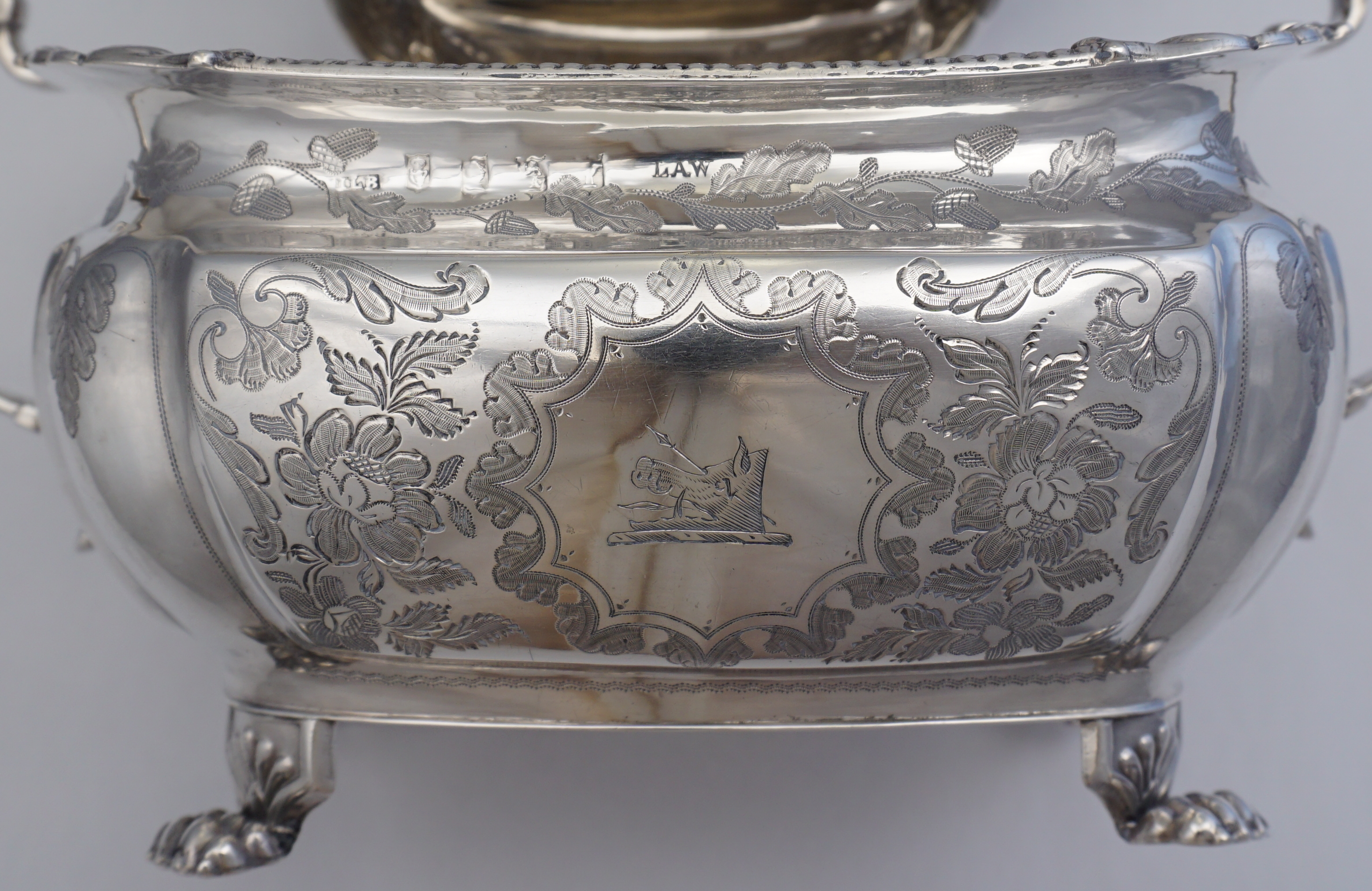| INDEX | ALL SILVER |
| DESCRIPTION | Good antique Georgian Irish solid sterling silver cushion form milk jug and large sugar basin each standing on four rococo claw and
shell bracket feet. Gadrooned top rims with acanthus shell corner pieces above engraved band of acorns amongst oak leaves. Main body engraved decoration is floral and
foliate. One cartouche on both pieces has a nicely presented boar's head crest. The milk jug has a distinctive spout that I have not seen on English silver so may well be a
particularly Irish form. The sugar basin really is large, you could almost bathe a baby in it. If this were a London piece I would be almost certain
that the spout was not original but as it is Irish I am open minded. The silversmith was clearly trying out some different techniques. The feet are in the distinctive style
of this maker but are hollow. Made in two halves, the pattern stamped in and then soldered together. A common technique later on but solid casting would have been the usual
way in 1819. I may be wrong. The discussion is now open and your thoughts appreciated. |
| SILVERSMITH | James Le Bas, also retailer mark of William Law |
| DATE or HALLMARK | 1819/20 |
| ASSAY OFFICE | Dublin, good to see the original assayer's scrape marks still present on the undersides. These scrapes are quite aggressive so I am wondering if this assayer had a scrap silver business on the side! |
| WEIGHT in GRAMS | 516 |
| LENGTH | basin including handles 8 ½", 217mm |
| SILVER STANDARD | ·925 silver |
| CONDITION | very good, some signs of use, one jug foot claw/bracket repair |
select any image to enlarge
| SOLD |
| Price £469 |
| item number m8187 |
| Available Jugs |
| email questions to silfren@btinternet.com
telephone 07563 011924 experts available 24 hours every day |
